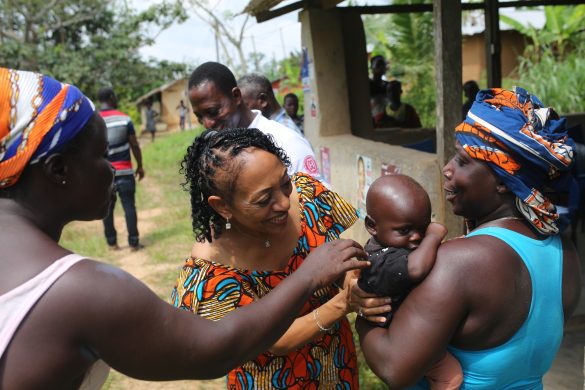Women and Children are to bear the brunt of poverty diseases and premature deaths at the recent announcement that Ghana may not be able to attain all the targets of the Millennium Development Goals (MDGs) by the year 2015. Almost all the targets that could not be achieved were in the area where women and children suffer most.
These include halving hunger and poverty by the year 2015, achieving universal basic education by the year 2015, promoting gender equality and the empowerment of women, as well as reducing child and maternal mortality.
The Millennium Project Task Force on Child and Maternal health has therefore called on developing countries like Ghana to focus on scaling up and strengthening their health systems in order to save the lives of millions of children and hundreds of thousands of mothers who die every year of preventable or treatable conditions.
As an independent advisory body directed by Prof. Jeffrey Sachs, the UN millennium Project submitted its report last week in New York. According to the report dubbed: „Who got the Power? Transforming Health Systems for Women and Children‟, approximately 10,8 million children under age of five and about 530.000 women of reproductive age die every year. „A woman living in Sub-Saharan Africa has one in 16 chances of dying in pregnancy or childbirth. This compares with one in 3.700 risk for a woman from North America,‟ the report said.
Giving an overview of the progress made so far by Ghana on the MDGs, the out-going head of the National Development Planning Commission, Prof. George Gyan Baffour explained that in the case of the first goal; that is halving poverty and hunger by the year 2015, the proportion of children underweight was 27 percent in 1992. This declined to 25 percent in 1999 and 23,3 percent in 2003.
– Using a linear projection of the 2015, the prevalence of underweight children will be 21 as against a target of 14, said he adding,‟ this clearly indicates that the country may not be able to reach this target.‟
On the second goal that is, achieving universal education, Prof. Gyan Baffour explained that the net primary school enrolment was 58 percent in 1999 and 69 percent in 2003.
He said a linear projected 2015 target would be 82,8 percent as against a target of 100 percent.
On the third goal, which is to promote gender equality and empower women, he said the proportion of female enrolment in primary schools to male ratio increased from 0,82 percent in 1990 to 0,87 in 1996 and then to 0,90 in 2000. – This goal can only be achieved by scaling up investment on interventions for promoting girls education, Prof. Gyan Baffour noted.
On Millennium Development Goal number four, which is reducing child mortality, he explained that under five child mortality in Ghana was 155 per 1000 live births, but this declined to 100 per 1000 live births in 2002, according to the Human Development Report of 2004.
– However judging from the current trend, under five mortality 78 per1000 is unlikely to be achieved, he said.
On Goal number five, that is aimed at improving maternal health, the target was to reduce maternal mortality levels in 1990 by two-thirds. The trend was 280/100,000 births in 1993, declining to 250/100,000 in 2003
Thus, by the year 2015, maternal mortality should decline to 54/100,000 live births.
Here Prof. Gyan Baffour said on the current pace the target is unlikely to be met.
On goal number six, which is geared towards combating HIV and malaria as well as other diseases, Prof. Gyan Baffour explained that in 1990 three percent of the adult population was infested with the HIV virus. This has increased to 3,6 per cent in 2003.
– Although a lot of effort has gone into combating HIV/AIDS and malaria, the trend indicate that the country is unlikely to meet these targets, he said.
Public Agenda, Ghana 1/24/05, and The Push Journal















